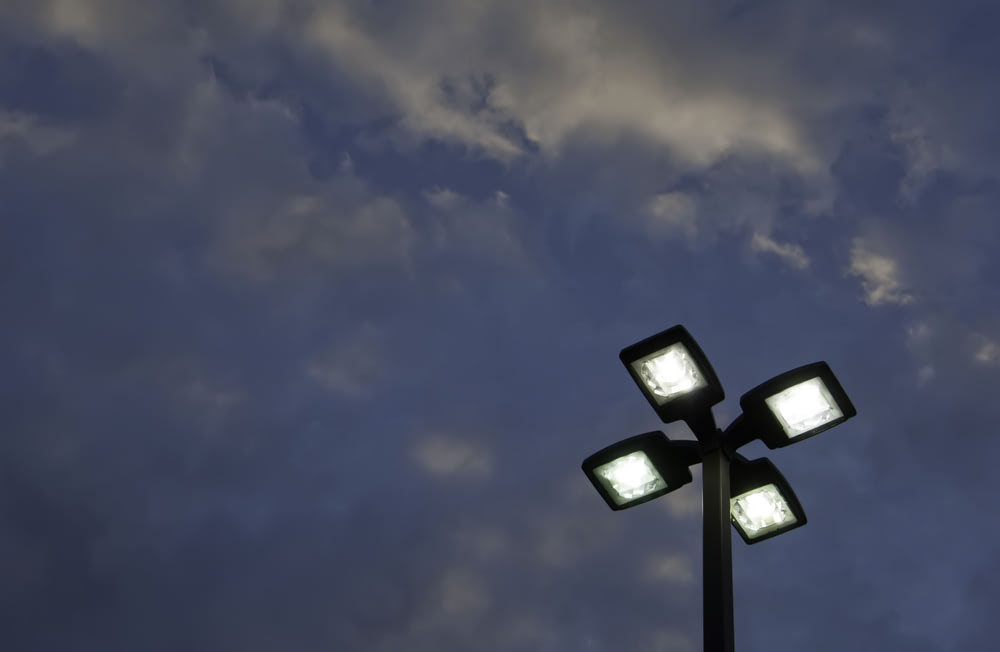Risk
8 Best Lighting Practices You May be Forgetting

When business owners don’t tend to think of lighting as a security measure. Often, decision makers think of lighting as part of a site’s infrastructure, or as a secondary security measure.
That’s not the case. Lighting is the first line of defense when it comes to keeping your business safe. Lighting is important for so many reasons in security, but done wrong, lighting can encourage crimes or even obscure them.
Best practices: 6 Steps for Pitching a Culture of Risk to Your Boss
How to use lighting to protect your site
1. Lighting should define your boundaries
Lighting is more than a way to see in the dark – it should be a wall of light that defines the perimeter of your property. This serves a couple of purposes — people should be able to see where your property begins and ends. More importantly, anyone who enters your site will have to walk through the light to get on or off of your property. The rule of thumb here is that if it doesn’t look like a used car lot, there’s not enough light. You should also light the entire path someone needs to take to get into your building — many times lighting will be used to illuminate a building, but the path or stairs to get to the building are dark.
2. Use white light
Sodium Vapor or other similar orange lights used in parking lots and street lighting, can be a problem later, if you have to review security footage of an incident. Orange light can obscure the colors of vehicles, for example: gray can look like green or pink. That’s a problem if you are asking the police to look for a suspect. White light, which you can achieve for a lower cost with LED lights, can give you a truer hue. LEDs and not just bright but also energy efficient.
3. Replace lights when they go out
When a light goes out, make it a priority to replace it within a couple of days. Make sure you have replacement bulbs on site. A week is too long for a light to be out — it’s enough time for a criminal to notice the outage and use it to their advantage.
4. Overlap lights
Every light should overlap with at least one other light. That way, if one light goes out, the area is still illuminated.
5. Don’t trust your eyes to tell you what your cameras see
There’s a simple test that will tell you if an area is too dark. Use your mobile phone to take a photo of the area. If you can’t see the photo well — if it’s too dark or grainy – you need more light. Your phone’s camera will show you what your monitors see.
6. Don’t neglect emergency lighting
Emergency lighting is critical inside a building. If power goes out, your people need to be able to know where the egress is, where fire extinguishers are and where other vital areas are. Shelters in place should also have emergency lighting; you don’t want your employees packed into a tight space in the dark.
7. Check your lighting on each camera
Your lights should be helping your cameras, not hindering them. Often, the two are installed separately, and this can cause problems. A light might blind a camera by shining directly into it, or an area might not be well-lit. Make sure your lights and cameras are working together.
8. Keep the lights on
If you’ve invested in lighting, the lights should be on all night, and if you’re a retail establishment, the interior lights should be on 24/7, so that no one can sneak inside unnoticed. If you’re concerned about your electricity, consider LED lights as a way to keep the lights on and save money.
Best Practices: Why Policy Review is Important to Security
Make a plan to light your business
Darkness is a criminal’s friend. Good lighting does several jobs when it comes to protecting a site: it defines the borders of your site, deters bad actors, allows your cameras to do their jobs, and – of course — is your primary means of detecting a crime.
Do you need help evaluating the lighting at your site? Schedule your personalized demo today.




